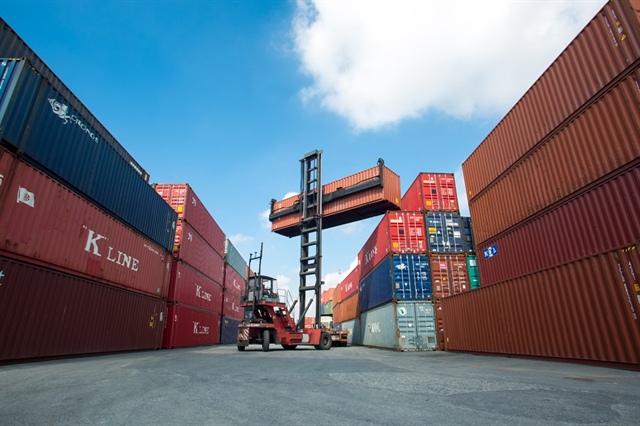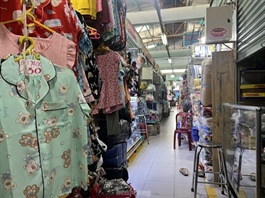Wood sector no stranger to adversity
Wood sector no stranger to adversity
Global trade dynamics are shifting, and key markets are tightening tariff policies. Ngo Sy Hoai, vice chairman and secretary general of the Vietnam Timber and Forest Products Association, told VIR’s Manh Bon how the nation’s wood processing sector is adapting to such shifts.
Vietnam’s wood and timber exports continue to grow, despite mounting pressure from trade measures in key markets. How do you assess the current performance?

Ngo Sy Hoai, vice chairman and secretary general of the Vietnam Timber and Forest Products Association |
In the first five months of 2025, Vietnam’s total export turnover reached $180.23 billion, up 14 per cent on-year. Exports of wood and wooden products amounted to $6.807 billion, reflecting a growth rate of 8.6 per cent. The pace of growth has slowed significantly from the 23.5 per cent recorded over the same period last year.
The sector anticipated such a deceleration. Although we serve more than 160 markets, five still account for the bulk of export turnover – the United States, China, Japan, South Korea, and the European Union – with the United States alone representing 56 per cent of Vietnam’s $17 billion wood exports in 2024.
The US market remains essential to our industry. Today, much of the household furniture used by the American middle class, from low-cost items to high-end pieces worth thousands of US dollars, originates from Vietnam. This success is a result of both enterprise effort and opportunity: American labour costs are high, while returns in furniture manufacturing are modest.
US companies began moving away from domestic production some 30 to 40 years ago. Prior to 2018, Chinese producers dominated the North American market. But with the advent of the US-China trade war, and the imposition of steep tariffs on Chinese goods, Vietnamese exports stepped in to fill the gap.
Currently, around 56 per cent of Vietnam’s wooden furniture exports are shipped to the United States, which, in turn, sources roughly 40 per cent of its imported furniture from Vietnam. However, both sides now recognise that such dependence is risky, as too many eggs in one basket.
As the United States adjusts its trade policy, to what extent is Vietnam’s wood processing industry vulnerable to potential tariff shifts and regulatory investigations?
Over the past five years, the US has launched three separate trade defence investigations into Vietnam’s wooden products, including anti-dumping and anti-circumvention cases. In each instance, despite intensive scrutiny, no violations were found, and no safeguard measures were imposed.
This outcome speaks to the maturity of our enterprises. Vietnamese manufacturers have actively cooperated with US inspection teams, maintaining complete documentation on product origin and raw material sourcing. Our experience shows that transparency, traceability, and regulatory compliance are essential, not just for the United States, but for any discerning market.
In the same five-month period, while exports reached $6.807 billion, imports of timber materials climbed nearly 20 per cent to over $1 billion. This reflects the dual nature of our industry, with strong in exports but equally dependent on quality imported inputs.
Vietnam’s wood industry is no stranger to adversity. It is labour-intensive, with narrow profit margins, and largely built on hard work. We often say that we “trade effort for return”. As with a climber on a mountain, sometimes we must pause, reassess, even take a few steps back to move further ahead. If new US tariffs do materialise, the sector will need to consolidate, adapt, and reinvigorate itself.
That said, we remain confident in our long-term position in the US market, and believe Vietnam will continue to be its largest supplier of wood furniture.
You have characterised Vietnam-US wood trade as complementary rather than competitive. Could you expand on the nature of this mutually beneficial relations?
Vietnam ranks fifth globally in wood and wooden product exports. The United States is not only our largest export market, but also our second-largest source of timber imports. We import high-grade American timber – red oak, white oak, walnut, and yellow pine – for domestic manufacturing, including items re-exported to the United States. This is a reciprocal value chain. We create value-added products that reflect both sides’ strengths: Vietnam’s production capacity and competitive labour costs, and the US’ premium raw materials.
A recent government decree amends and supplements preferential import tax rates of a number of items in the Preferential Import has further cemented this cooperation. It reduces import tariffs on timber and wood products from 20 or 25 per cent to zero. This paves the way for increased timber imports from the United States, especially as American hardwoods remain popular with both domestic and international consumers.
What are the broader challenges the sector faces in this evolving trade environment?
Wood processing is a sensitive sector. It touches upon forest protection, biodiversity, and climate policy. In such a context, difficulties are constant – and managing them is part of the job.
We must now move decisively towards green production, trade, and growth. That includes ensuring raw material traceability, compliance with sustainable development indicators, and accurate greenhouse gas emissions inventories – essential for overcoming non-tariff barriers in high-standard markets.
At this point, the industry must step back, regroup, and reorient. That includes expanding market outreach beyond the current five key markets. Many firms are now turning their attention to potential new destinations such as Australia, New Zealand, and the Middle East.
Could Vietnam’s domestic market serve as a buffer during global volatility, and what gives you confidence that Vietnam’s wood sector will continue to thrive despite current headwinds?
In theory, yes – but in practice, the domestic market is still limited in scope. Current demand for wood furniture in Vietnam is estimated at $5 billion, and may double by 2030, thanks to government housing initiatives and a growing middle class.
However, even with such growth, the domestic market cannot absorb the entire industry’s output. In rural areas, while demand is large, supply is dominated by 340 traditional craft villages that produce custom furniture tailored to cultural tastes. These products often serve not only functional purposes but also family heritage, which industrial production is not well-positioned to fulfil.
Everything lies in our fundamentals. Vietnam offers competitive labour costs, a skilled workforce, and a strong commitment to compliance and sustainability. Our enterprises are willing to accept lower margins and work harder to sustain growth. That is something many foreign competitors cannot match.
If our firms remain committed to transparency, meet sustainability criteria, and proactively adapt to shifting market conditions, I am confident that the wood processing industry will not only weather the current challenges – but emerge stronger in the years to come.
- 14:00 26/06/2025



























